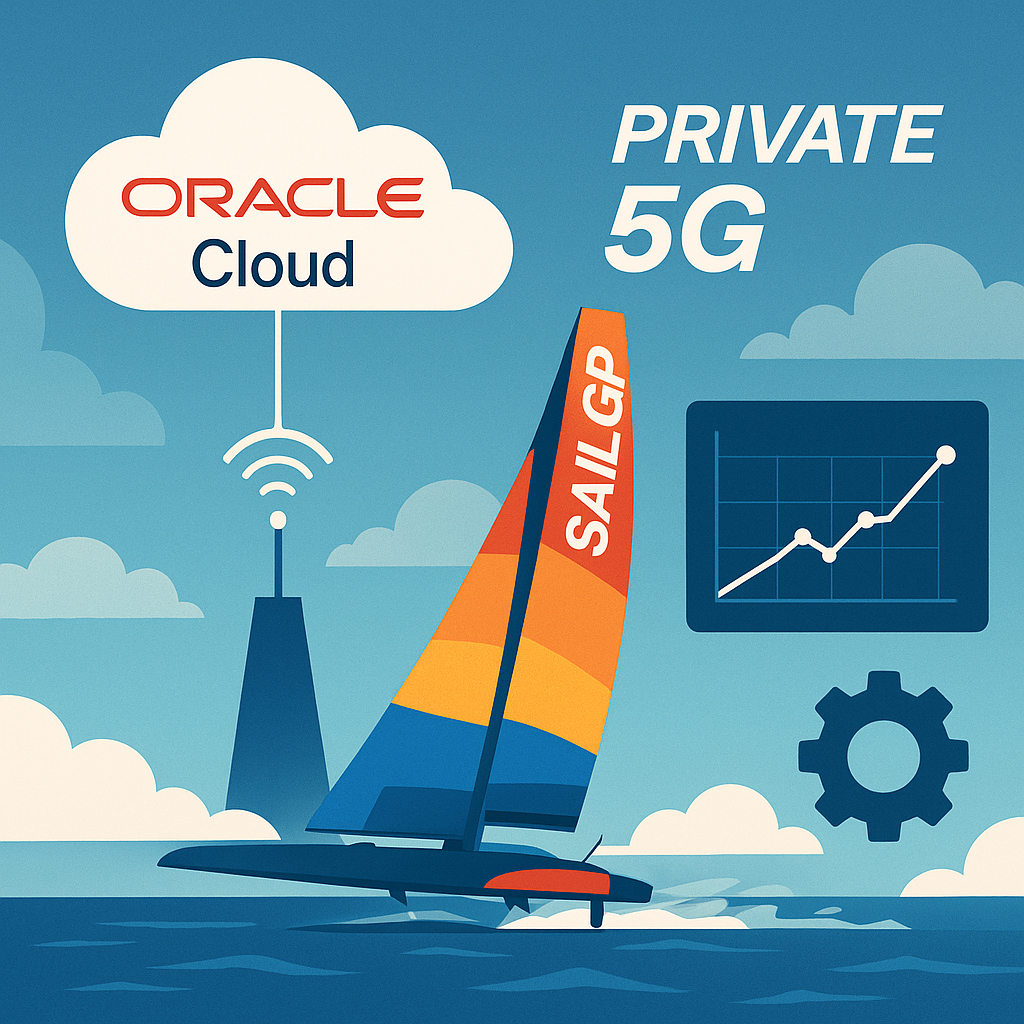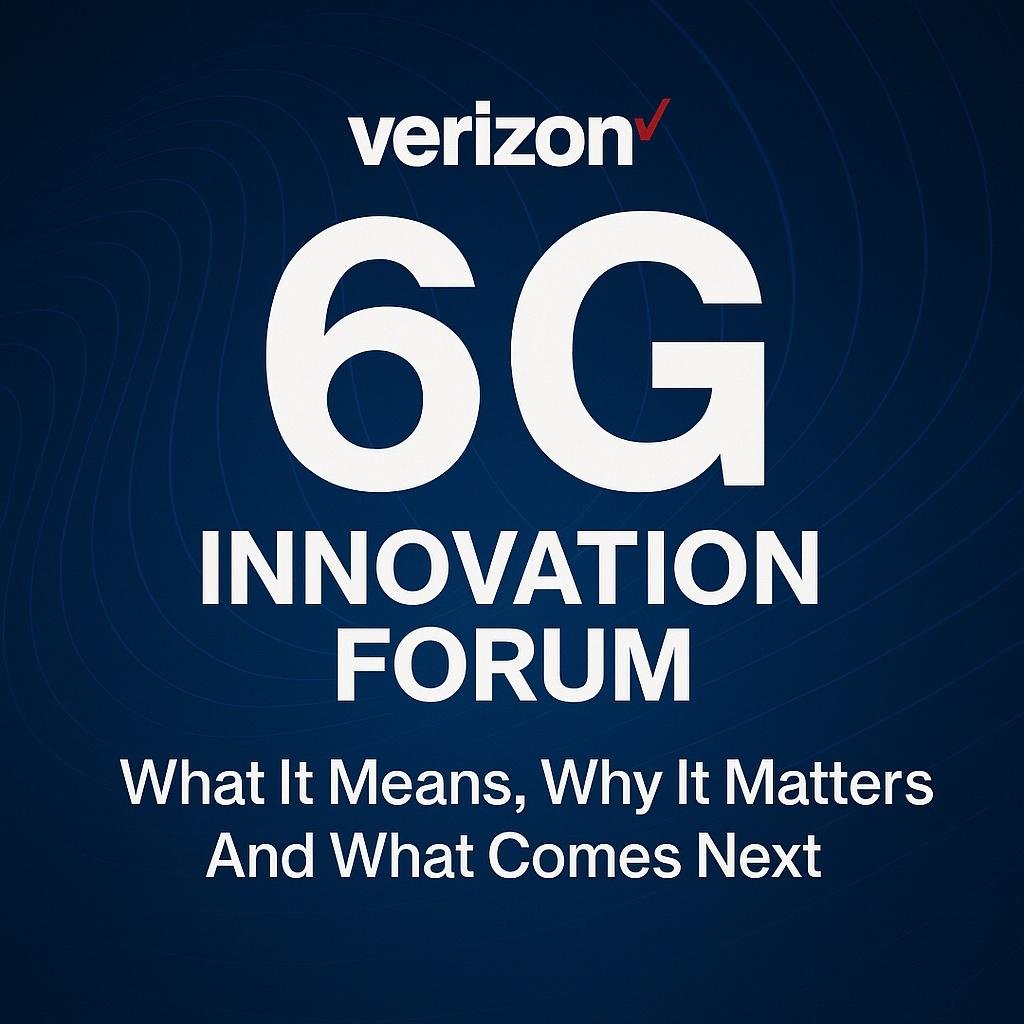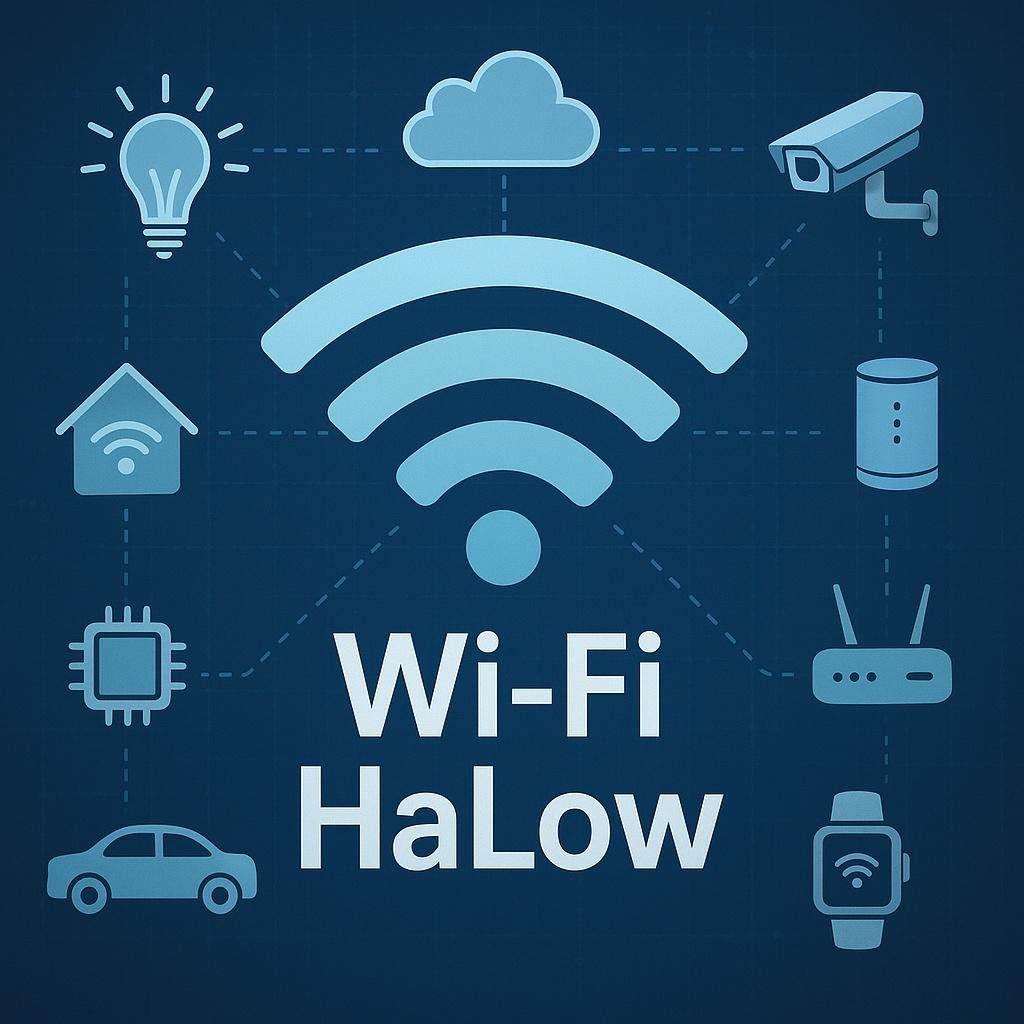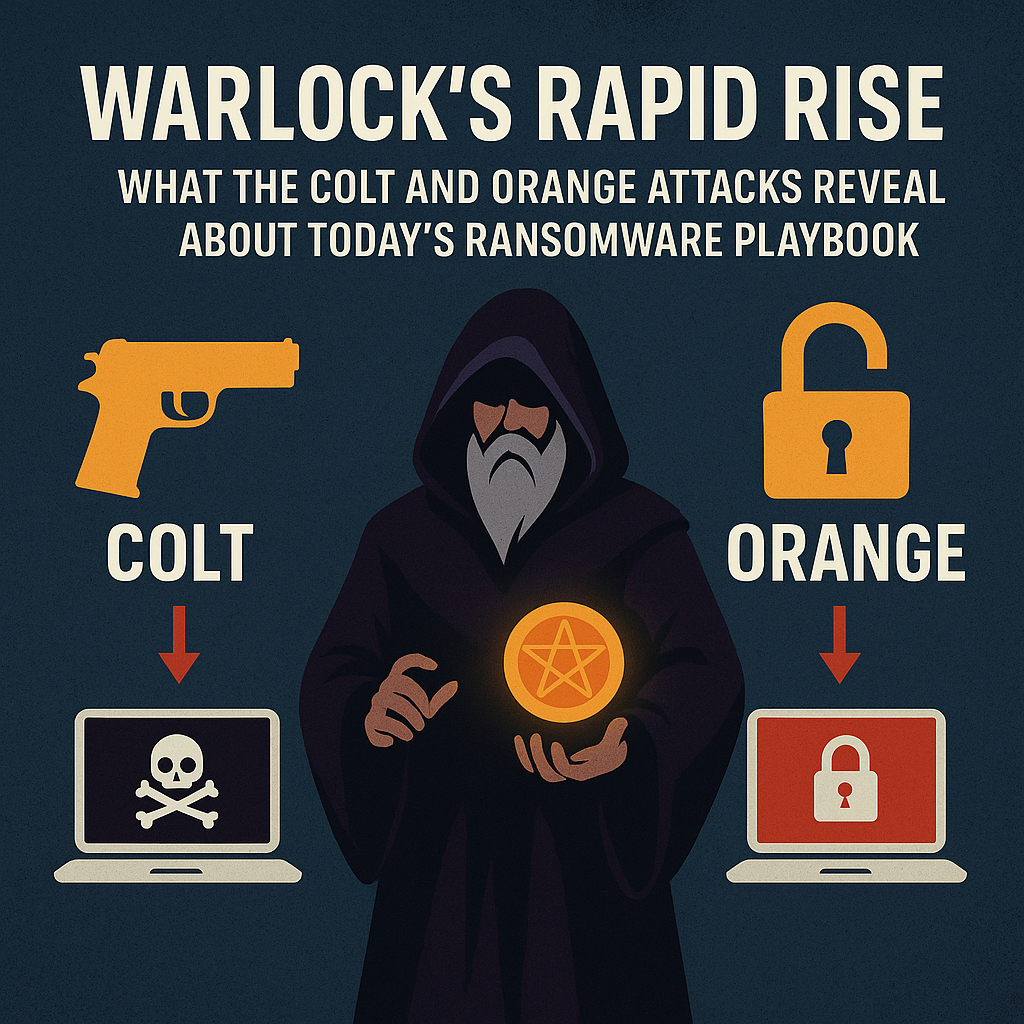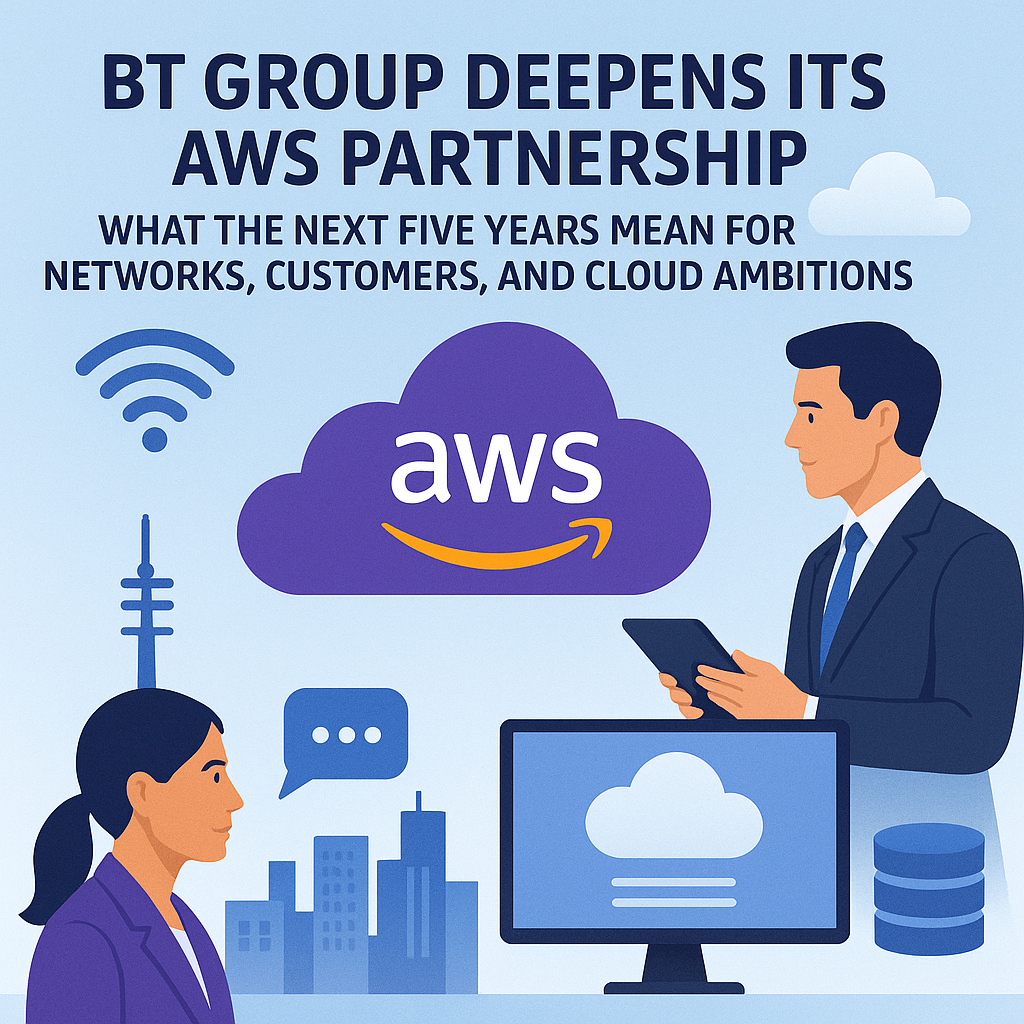Introduction
SailGP is a study in extremes. The boats are fast, the weather is fickle, and tactics can flip in seconds. Winning is not only about elite sailors and aerodynamic foils. It is also about data: the constant flow of telemetry, video, wind dynamics, and race control signals that must reach coaches, commentators, broadcasters, and fans with near zero delay. That is why the combination of cloud scale analytics and private 5G connectivity has become so valuable. Oracle Cloud provides the processing power and data services to digest millions of events in real time, while a private 5G network supplies predictable bandwidth and low latency across docks, chase boats, and race villages where public networks get congested. Together they turn a moving stadium into a living data platform.
The first half of 2025 has been good for the internet of things. Device makers have shipped new sensors, batteries last longer, and cellular modules have become more affordable. Analysts expect billions of cellular IoT connections by the end of the decade. Growth brings complexity though. Devices come in all sizes, they operate in harsh conditions, and they must deliver the same end: trustworthy insight that improves decisions and outcomes. A global sailing league is a perfect test bed. Boats race close to shore, weather shifts minute by minute, and spectator traffic spikes network loads. If an architecture works here, it tends to work in factories, ports, mines, and stadiums too.
The Performance Challenge SailGP Needed To Solve
Modern foiling catamarans behave more like low-flying aircraft than traditional boats. The control loop is unforgiving. Helms need microsecond feedback on foil angle, ride height, rudder loads, and apparent wind. Coaches want immediate comparisons across legs and crews. Directors need synchronized video and data overlays for broadcast. Fans want meaningful metrics on a phone without lag. The problem is not a single stream. It is hundreds of concurrent streams that must be captured, cleaned, secured, and routed correctly every second, even when boats disappear behind a pier or a camera helicopter changes position.
Traditional Wi-Fi can be excellent on a dock or in a media tent. It struggles when the playing field is a bay packed with phones. Public 4G or 5G delivers broad coverage but does not give a team control over quality of service during peak loads. A private 5G network fills that gap. The league can assign resources, prioritize telemetry, and isolate critical traffic from public use. When that network hands its data to a well-designed cloud backbone, everything clicks.
Why Private 5G Changes The Game On The Water
Private 5G brings three advantages that matter in a live racing environment. The first is determinism. You can design radio cells, power levels, and handovers so a boat moving at high speed maintains a stable link. The second is control. Identities are tied to SIM profiles, so you decide which devices can attach and which traffic classes take precedence. The third is security. Network slicing, segmentation, and mutual authentication create a clean boundary between operational flows and public access.
On the water, small details yield big wins. A chase boat can host a compact 5G cell that follows the fleet. Shoreline nodes can fill shadows behind buildings. Uplink can be tuned for bursts from high-definition cameras while a separate lane guarantees steady trickles from sensors. The result is not just more bandwidth. It is confidence that the most important packets arrive on time.
Oracle Cloud As The Brains Of The Operation
Once data lands, the cloud has to do the heavy lifting without getting in the way. An event like SailGP benefits from a cloud stack that treats streaming as a first-class citizen. In practice that means a managed pipeline that ingests messages from gateways and radios, validates them against schemas, enriches them with race metadata, and stores them in a format suitable for both real-time dashboards and deep analysis later.
Oracle Cloud is built for this pattern. Streaming services handle high-velocity ingestion. Serverless functions transform payloads as they arrive. Data lakes store historical telemetry from many seasons at a cost that does not punish long retention. Autonomous databases index curated data sets for low-latency queries by apps and broadcast graphics. Analytics services power dashboards for race control and media teams. The end users see simple tiles and charts, but behind those screens sit rules for quality checks, anomaly detection, and graceful fallbacks that keep the show running.
The Data Pipeline: From Foils To Fan Phones
Picture the workflow as a loop. Sensors and cameras on the boat send signals to a ruggedized edge computer. That gateway compresses and tags the data, then pushes it over private 5G to a nearby edge node. The edge node performs quick sanity checks and forwards the stream to Oracle Cloud. In the cloud, a streaming layer routes the data to two paths. The first feeds low-latency caches for live dashboards, predictive alerts, and broadcast overlays. The second stores time series to a lakehouse for analysis after the race.
Applications then request exactly what they need: a coach tablet asks for five metrics at a one-second cadence, the commentary app wants ten at two seconds, and the fan app requests only the highlights. Everything is synchronized to a common clock so the overlay on a gybe matches the actual maneuver. When a device drops offline, the pipeline should degrade gracefully. The gateway buffers. The edge retries. The cloud extrapolates short spans using proven models and clearly flags where values are estimates. This is what builds trust. People can follow the action without guessing whether a number is stale.
Competitive Benefits On Race Day
The clearest benefit is faster decision making. Crews and coaches can compare speed made good, ride height, and foil cavitation risk in near real time. They adjust trim and tactics before a small error becomes a lost leg. Race control improves safety. Virtual boundaries and exclusion zones can be enforced with alerts that matter. Broadcast teams tell a richer story. Viewers see acceleration, gust lanes, and tactical splits as they happen rather than in a post-race package. Sponsors gain clean metrics on engagement without burdening the network. Training jumps a level when crews review synchronized video, telemetry, and weather in a single timeline.
What Manufacturers And Venue Operators Can Reuse
The pattern transfers neatly to factories, ports, and stadiums. Replace boats with robots and conveyors. Replace a regatta course with a yard or assembly line. The recipe is similar. Private 5G provides deterministic connectivity for mobile assets and dense sensor clusters. Oracle Cloud supplies the data backbone: streaming ingestion for signals, low-latency stores for operations, and governed archives for audit and improvement.
In a factory, quality engineers want statistical process control without waiting for end-of-shift reports. Maintenance wants fault signatures before a gearbox seizes. Operations wants line changeovers to be data guided. In a port, autonomous vehicles and cranes need reliable handoffs. In a stadium, ticketing and security must not fight with fan traffic. The mix of private 5G and cloud analytics solves each of these needs with the same discipline used on the water.
Security, Governance, And Trust
Trust is more than encryption in transit. It is identity at the device level, least-privilege access at every hop, and clear data lineage. Private 5G helps by tying devices to SIM credentials and policy. The cloud reinforces that with role-based access, network isolation, and managed secrets. Good governance shows up in everyday work.
Engineers can reproduce a chart because they know exactly which version of a data set and which model generated it. Auditors can confirm retention and deletion rules. Media teams can share without leaking sensitive telemetry. Clarity also matters for participants and fans. Consent, purpose limits, and retention windows should be simple and published. When people understand how their data is used, trust grows.
Cost And ROI: Where The Payback Comes From
The return does not hinge on a single line item. It is a bundle of small improvements that add up. Damage saved when a component is swapped in time. Hours saved when troubleshooting uses correlated logs and telemetry. Travel avoided when coaches review rich data remotely. Fan engagement boosted by real-time storytelling that keeps people watching longer. Cloud costs are controllable when architectures match the workload. Cold storage for archives stays inexpensive. Hot paths scale up on race days and scale down when the village closes.
Private 5G has upfront costs for radios and spectrum arrangements, yet it reduces spending on temporary cabling, avoids last-minute bandwidth crises, and extends life across many events. A disciplined program measures three things. Time to insight during live operations. Incidents avoided or resolved faster than last season. Engagement minutes per viewer for broadcasts and apps. When those curves bend in the right direction, the investment explains itself.
A Pragmatic Implementation Roadmap
Start with discovery. Map every data source, consumer, and decision that needs to happen in less than one minute. Identify failure points and radio shadows. Then build a lab. Connect a real gateway, a small private 5G cell, and a thin slice of the cloud pipeline. Prove ingestion, transformation, and visualization under load. Move to a controlled pilot during practice sessions. Measure latency and resilience. Train crews and media teams on the tools they will actually use.
Change management is as important as technology. Users adopt tools that remove friction. Coaches want fast, readable screens with the five numbers that matter. Directors want reliable overlays that do not crash before a start. Security teams want dashboards that show posture at a glance. Deliver those specifics and adoption follows.
Common Pitfalls And How To Avoid Them
Standardize interfaces and schemas early. Radio planning near water is tricky because reflections change with tide and traffic. Validate with real surveys at race time. Backhaul is often the quiet failure. Build redundancy across fiber, microwave, and satellite where possible. Battery life can sabotage field gear. Choose sensors and gateways with power budgets that match a long day. Data quality drifts when sensors age or mounts loosen. Flexibility keeps costs honest.
Conclusion
SailGP shows what happens when connectivity and cloud are designed together. Private 5G delivers the reliable, controllable lanes that critical data demands in a crowded, mobile venue. Oracle Cloud turns that data into decisions, stories, and long-term advantage. The lesson travels well. If an architecture holds up in salt spray and stadium crowds, it will be comfortable in a factory aisle or on a port quay. The formula is simple in words and exacting in execution: get the right data, get it quickly, keep it safe, and use it to make better calls. That is how a league finds an edge, and it is how any organization can turn IoT from a collection of gadgets into a dependable engine for performance.
